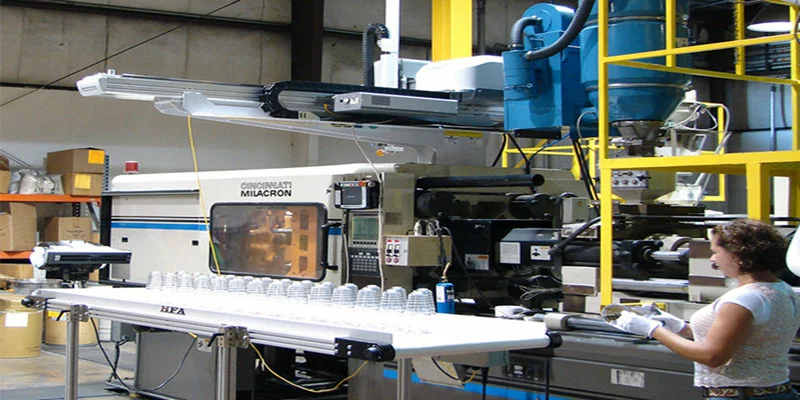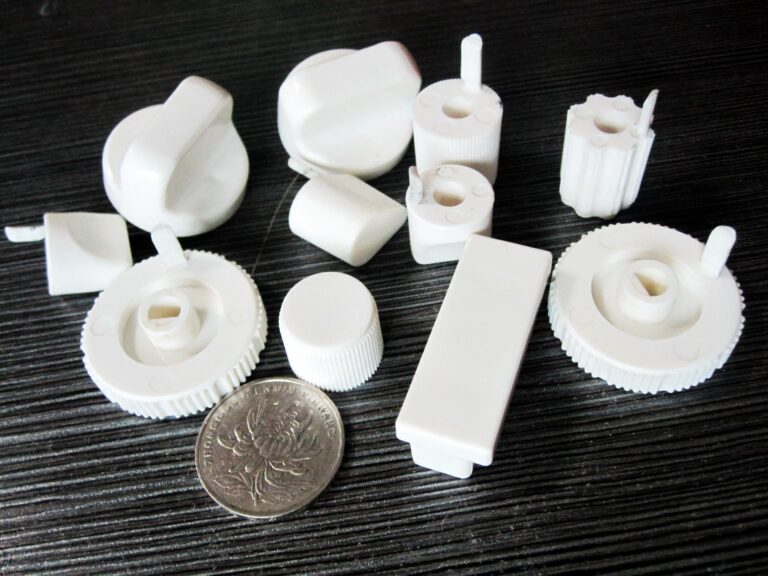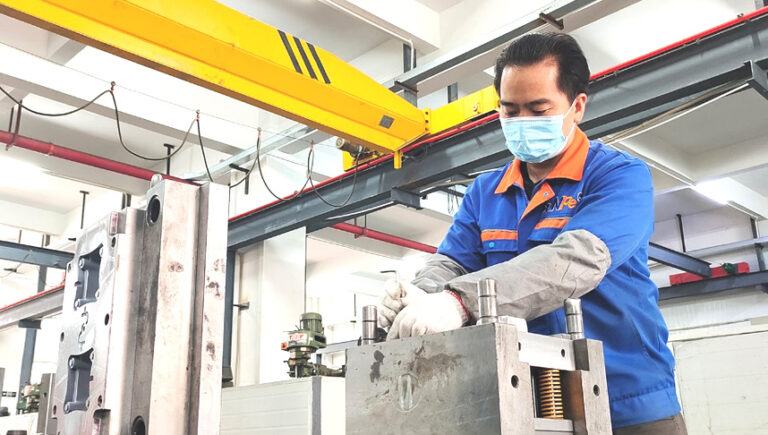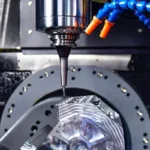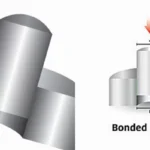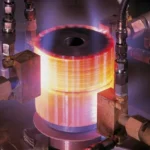The advantages of plastic injection molding for manufacturing parts include rapid production speed, high efficiency, automated operation, and flexibility in shapes and sizes. Additionally, injection-molded products are precise in dimensions, easily replaceable, and capable of forming complex shapes. This eco-friendly method is ideal for mass production and intricate designs.
However, despite operators being skilled in handling specific machines and the molding process, various defects in rapid injection molding can arise from mold design and materials. This article aims to address issues related to plastic injection molding by analyzing the causes of these problems, which may stem from raw materials, plastic parts, mold design, and the molding process itself, and proposing relevant solutions.
1. Short Shots
Short shots occur when the mold cavity is not completely filled.
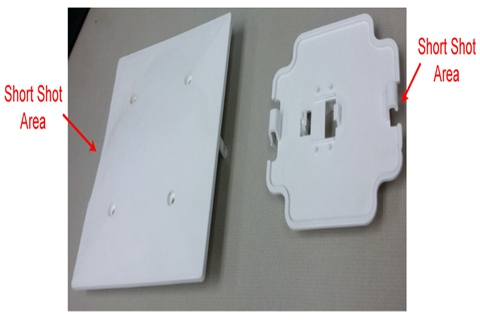
Causes:
- Low die temperature, material temperature, injection pressure, or injection speed.
- Uneven plasticization of raw materials.
- Poor exhaust.
- Insufficient material flow.
- Thin part design or small gate size.
- Premature curing of polymer melt due to poor structural design.
Remedies:
Material:
- Use more fluid materials.
Mold Design:
- Fill thicker sections before thinner ones to prevent retention issues.
- Increase the number of gates and runner sizes to reduce flow resistance.
- Properly position and size exhaust ports to ensure effective venting.
Machine:
- Inspect the check valve and the inner wall of the material cylinder for wear.
- Check the feeding port for blockages or bridging.
Process:
- Increase injection pressure and speed to enhance shear heat.
- Increase the injection volume.
- Raise the material cylinder and mold temperatures.
2. Air Traps
Air traps occur when air is trapped in the cavity, leading to bubbles in the final part.
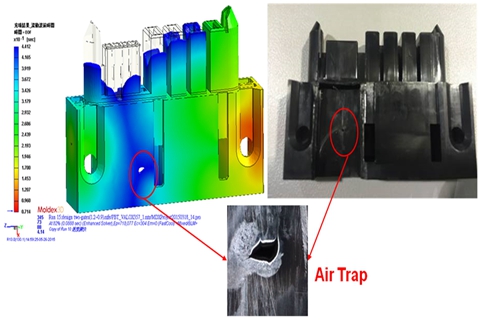
Causes:
Air becomes trapped when it cannot escape from the parting surface, the ram, or the vent as the two melt fronts meet.
Remedies:
Structural Design:
- Ensure uniform wall thickness to reduce inconsistencies.
Mold Design:
- Add a vent at the last filled area.
- Redesign the gate and runner system for better airflow.
Process:
- Reduce the injection speed during the final stage.
- Increase the mold temperature.
3. Brittleness
Brittleness refers to plastic parts that are prone to cracking or breaking easily.
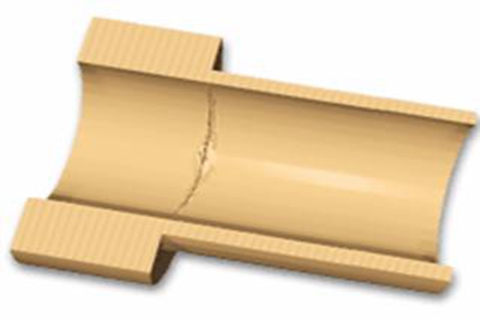
Causes:
- Unsuitable drying conditions or excessive use of recycled materials.
- Incorrect injection temperature settings.
- Inappropriate design of the gate and runner system.
- Insufficient strength of the melt mark.
Remedies:
Material:
- Establish appropriate drying conditions before injection molding.
- Minimize the use of recycled materials and increase the proportion of virgin materials.
- Use high-strength plastics.
Mold Design:
- Increase the sizes of the main runner, branch runner, and gate.
Machine:
- Select a well-designed screw to ensure uniform temperature distribution during plasticization.
Process:
- Lower the temperature of the material cylinder and nozzle.
- Reduce back pressure, screw speed, and injection speed.
- Increase the material temperature and injection speed.
4. Burn Marks
Burn marks occur when gas in the cavity is not removed promptly, resulting in blackened areas at the end of the flow.
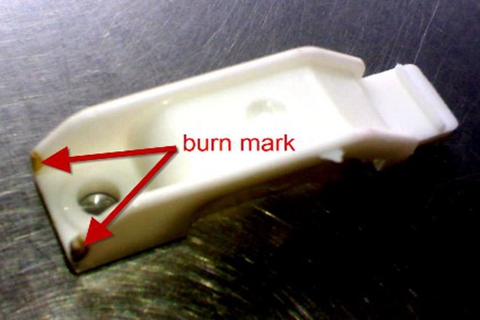
Causes:
- Inability to remove air from the cavity in time.
- Material degradation due to excessively high melt temperatures, high screw speeds, or improper runner system design.
Remedies:
Mold Design:
- Incorporate an exhaust system in areas where exhaust gas is likely to accumulate.
- Increase the size of the runner system.
Process:
- Reduce injection pressure and speed.
- Lower the barrel temperature.
- Ensure that the heater and thermocouple are functioning properly.
5. Flash
Flash refers to excess plastic that appears on the mold parting line or ejector area.
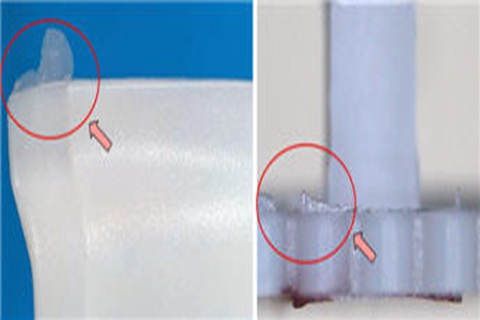
Causes:
- Insufficient clamping force.
- Defects in the mold.
- Unreasonable molding conditions.
- Improper design of the exhaust system.
Remedies:
Mold Design:
- Design the mold to ensure proper closure when it is closed.
- Verify the size of the exhaust ports.
- Clean the mold surface regularly.
Machine:
- Use a machine of appropriate size for the application.
Process:
- Increase injection time and reduce injection speed.
- Lower the temperatures of the barrel and nozzle.
- Reduce injection pressure and hold pressure.
6. Delamination
Delamination occurs when the surface of a part can peel off layer by layer.
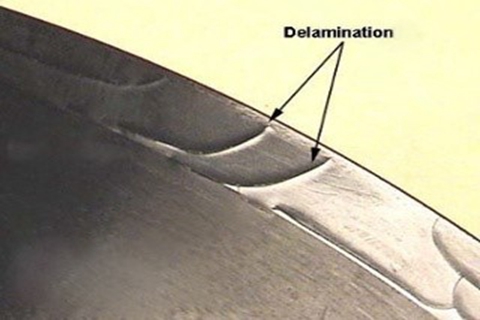
Causes:
- Mixing incompatible polymers.
- Excessive use of release agents during molding.
- Inconsistent resin temperature.
- Excess moisture in the material.
- Sharp angles in the gate and flow path.
Remedies:
Material:
- Avoid mixing incompatible impurities or contaminated recycled materials with the raw materials.
Mold Design:
- Chamfer all runners and gates to eliminate sharp angles.
Process:
- Increase barrel and mold temperatures.
- Properly dry the material before molding.
- Minimize the use of release agents.
7. Jetting
Jetting occurs when the melt flows too quickly, creating a serpentine spray trace on the part.
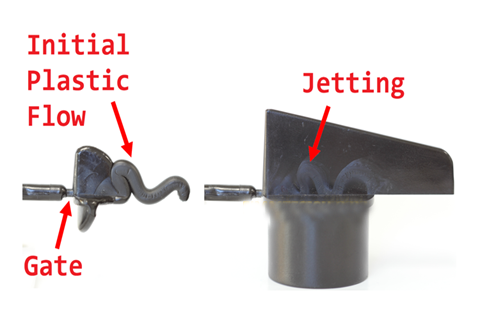
Causes:
- Gate size is too small, especially when facing a large cross-sectional area of the product.
- Excessively fast filling speed.
Remedies:
Mold Design:
- Increase the size of the gate.
- Change the side gate to a lap gate.
- Add a stop pin in front of the gate to control flow.
8. Flow Lines
Flow lines are wavy defects on the surface of a product, often resembling a frog jump, caused by slow melt flow.
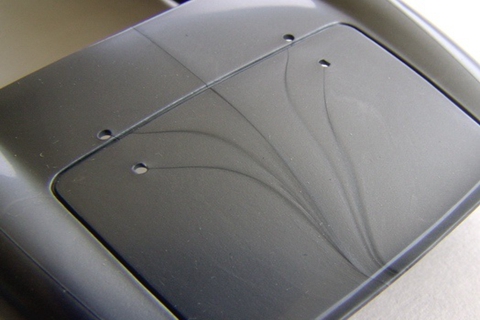
Causes:
- Low mold and material temperatures.
- Slow injection speed and pressure.
- Small flow channel and gate sizes.
- Excessive acceleration during filling due to product structure.
Remedies:
Mold Design:
- Increase the size of the cold well in the flow channel.
- Expand the sizes of the runners and gates.
- Shorten the main channel or switch to a hot runner system.
Process:
- Increase injection speed.
- Raise injection pressure.
- Extend pressure holding time.
- Increase mold and material temperatures.
9. Fog
Fog refers to a cloud-like discoloration near the gate, often caused by melt fracture.
Causes:
- A small gate size or thin cavity at the gate leads to high melt flow rates, resulting in increased shear rates and shear stress. This can cause the melt to fracture, resulting in fog.
Remedies:
- Moldflow Simulation: Utilize Moldflow to predict the temperature, shear rate, and shear stress of the melt in narrow zones. Moldflow provides upper limits for these parameters for various plastic materials. Engineers can adjust the gate size and cavity wall thickness based on the analysis to eliminate fog.
10. Streaks
Streaks are defects characterized by the presence of water, air, or char distributed along the surface of the part in the direction of flow.
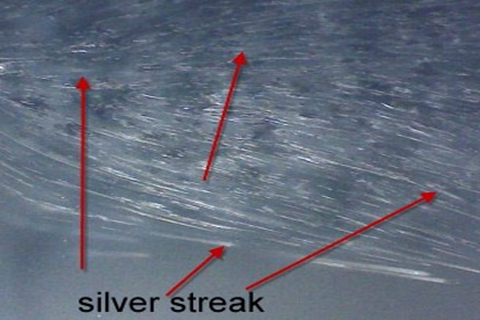
Causes:
- High moisture content in raw materials.
- Trapped air in the raw material.
- Polymer degradation due to contamination, excessive barrel temperature, or insufficient injection volume.
Remedies:
Mold Design:
- Ensure that the exhaust position is adequate for proper venting.
Process:
- Select the appropriate injection molding machine and mold.
- Thoroughly clean the barrel when switching materials to remove old residues.
- Enhance the exhaust system to improve air removal.
- Reduce melt temperature, injection pressure, or injection speed as needed.
11. Sink Marks
Sink marks are concave depressions that appear on the surface of a part, often related to wall thickness.
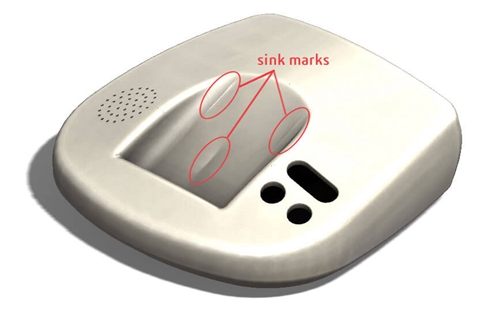
Causes:
- Low injection or holding pressure.
- Insufficient holding or cooling time.
- Excessively high melt or mold temperatures.
- Poor structural design of the part.
Remedies:
Design:
- Use a corrugated surface in areas prone to dents.
- Reduce the thickness of walls, minimizing the aspect ratio. Maintain an adjacent wall thickness ratio of 1.5 to 2, ensuring smooth transitions. Adjust the thickness of ribs and counterbores to 40-80% of the base wall thickness.
Process:
- Increase injection pressure and hold pressure.
- Increase the size of the gate or adjust its position.
12. Weld Lines
Weld lines are surface defects that occur when two streams of melt flow come together and fail to fuse properly.
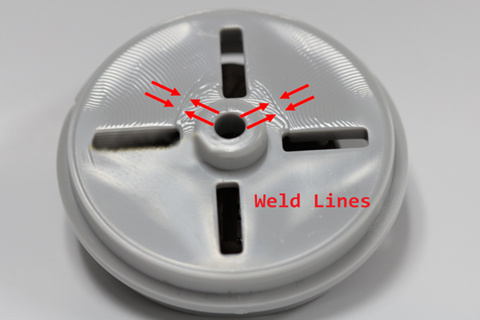
Causes:
- Presence of holes, inserts, or multi-gate injection methods, or uneven wall thickness can lead to the formation of weld lines.
Remedies:
Material:
- Use materials with increased fluidity to enhance melt flow.
Mold Design:
- Change the position of the gate to optimize flow paths.
- Add venting slots to facilitate air escape.
Process:
- Increase the melt temperature to improve flow.
- Reduce the amount of release agent used.
13. Warpage
Warpage is a common and challenging issue in the design and production of plastic parts.
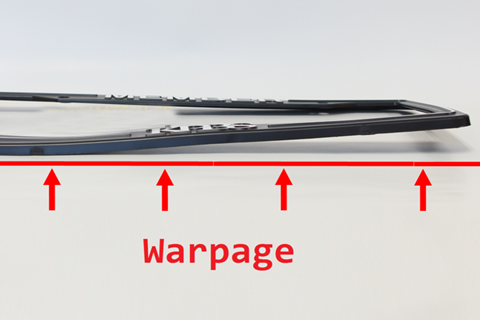
Causes:
- Mold Structure: Issues with the pouring, cooling, and ejection systems.
- Product Structure: Variations in wall thickness, curved or asymmetrical geometries, and poorly designed ribs or bosses.
- Production Process: Incomplete cooling of plastic parts and unreasonable injection and pressure holding curves.
- Plastic Materials: Properties of the plastic, including shrinkage rates and lack of fillers.
Remedies:
- Mold Temperature: Ensure stable mold temperatures by providing balanced cooling/heating systems.
- Section Thickness: Redesign product shapes and sizes to accommodate resin characteristics and minimize irregular section thickness.
At AS Prototypes, we have encountered numerous plastic injection molding challenges and solutions, particularly in prototype injection molding. To deliver high-quality injection molded products for our customers, we meticulously consider the details of injection molding machine parts and follow a step-by-step approach throughout the manufacturing process. This careful attention ensures optimal results in every project.

